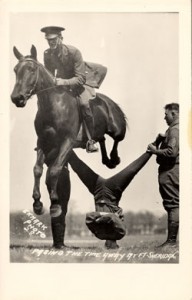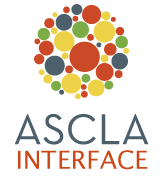
By Judy Hoffman, Marketing Communications Specialist, North Suburban Library System
On the wings of a 1998 state-funded Illinois Educate and Automate grant, fifteen libraries in the North Suburban Library System (NSLS) http://www.nsls.info learned the art of local history digitization. Eleven years and 140,000 records later, over 40 Illinois cultural institutions continue to ensure that online history has a future via Digital Past.
Under the guidance of Northwestern University experts, the pioneering libraries learned the cutting edge digitization techniques of the day. The website has evolved from the swapping of zip disks, to web entry, to uploading through OCLC�s CONTENTdm. With more changes on the way, the North Suburban Library System (NSLS) is celebrating the long-term success of Digital Past with a complete redesign.
With an upgrade to CONTENTdm version 5, NSLS staff is adding customized features that support important social networking capabilities. These include:
- Extensive user interactivity with tagging and online comments.
- Public assistance with photo IDs and related stories for existing content.
- Ability for the public to add their own photos through the [Digital Past Flickr group http://www.flickr.com/groups/digitalpast]. There is also a selection of Digital Past items already on Flickr with the intent to attract new audiences.
- Application of geo-tagging to pinpoint the exact locations of buildings and sites in Digital Past content.
There is a Digital Past Facebook application where users can choose an image from Digital Past to display on their wall. This has been popular for featuring genealogically significant sites. Another planned customized program will build a search engine that will search the Digital Past database, the collection exhibits, and Flickr all together.
�We know these additions are desired by users, and essential for continued relevancy,� said Sarah Long, NSLS executive director. �But social networks of a different type [partnerships] have always been a part of the success of Digital Past. The participating organizations, which include libraries, historical societies, and museums, have been working cooperatively since day one to advance the site.�
When Digital Past was getting started, a group of contributors sat on a committee to draft comprehensive standards. Currently, a users� group meets quarterly to share best practices and challenges, and to generate new ideas. One member, a retired teacher, is developing lesson plans for teachers utilizing Digital Past as a student resource. When complete, the plans will be available on the site.
�Each collection and exhibit in Digital Past has enormous significance to the contributing institution or community,� said Kay Schlumpf, Digital Past coordinator. �I have been contacted many times over the years by individuals that want to share the personal impact of these collections.� Examples of personal discoveries shared with Schlumpf include:
- The largest collection on Digital Past is the internationally recognized Curt Teich Postcard Archive of the Lake County Discovery Museum. Numerous requests have come for copies of postcards of hotels where people were married or for schools attended.
- The Park Ridge Public Library WWII clippings found online by a gentleman in Great Britain led to the discovery that he had half-siblings in the United States. He eventually traveled here to meet them.
- Cemetery headstones documented in the Barrington Area Library collection provided one man the first glimpse of the grave of his parents� firstborn child, the sister he never knew, who died at birth.
The benefits of a collaborative digital collection such as Digital Past extend to both the contributing organizations and the end user. These include:
- Savings: NSLS provides the servers and technical support, relieving participating organizations of the extra expenditures of time and money of solo digital initiatives.
- Prominence: Aggregation produces higher results in browser searches, providing greater prominence for items in the collection.
- Ease of use: The federated search of a collective site provides a more productive online experience than moving from site to site.
Schlumpf has been involved with Digital Past for its entire history. Please feel free to contact her at kschlumpf@nsls.info with any questions or suggestions, or stop by Digital Past at www.digitalpast.org to add your own comments, tags, IDs, and contributions to its content.

1 comment
Donna Longo DiMichele says:
Jul 13, 2009
It is great to read about a digital library program that has sustained for over a decade, all the while adding new feature. The idea of adding a Facebook component is terrific and makes the collection all the more visible.